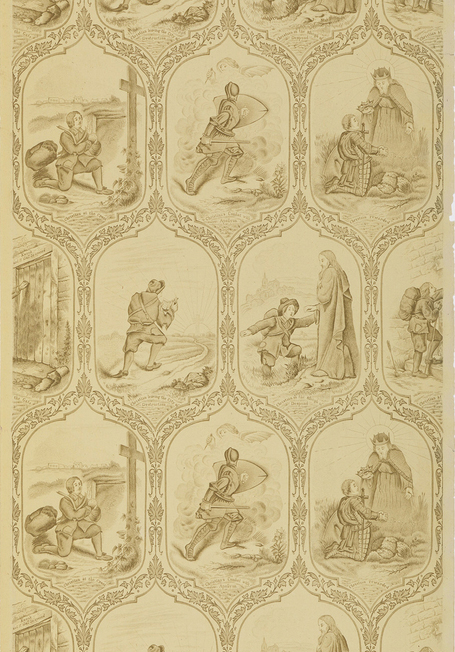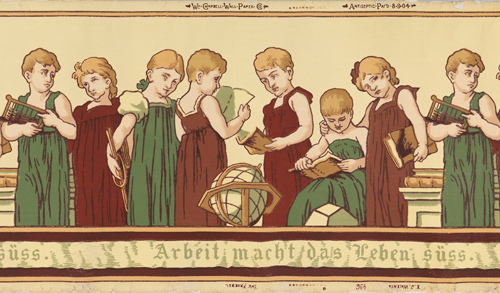This post was originally published January 18, 2013 and is being reposted in a belated commemoration of A.A. Milne’s birthday and the creation of this wonderful story and its beloved characters. This children’s frieze captures the adventures of Winnie the Pooh and Christopher Robin. This is a woodblock print and was produced within a year...
I have long admired the wide children’s borders, also called friezes, designed and produced in the early twentieth century, prior to the Great Depression in 1929. Cooper Hewitt has a fair collection of these with the most popular being Winnie the Pooh, produced ca. 1926, coinciding with the release of the book by A.A. Milne...
This delightful sidewall for a nursery is the work of Dorothy Hilton, a late Victorian designer of which sadly little is known. She was based in Birmingham and had a sister Agnes who was also a designer. Articles in the Studio record that she exhibited at the 1899 National Competition of the South Kensington schools...
One of the influences on design and technology in the nineteenth century was new information on health and hygiene. It was discovered early in the century that germs cause disease, and there were a number of cholera outbreaks beginning early in the nineteenth century which lasted through most of the century. Wallpaper had always been...
The early years of the twentieth century were the high point in children’s room decoration. The Industrial Revolution brought about increased wealth, and children were given their own rooms for the first time. The decoration of a child’s room was supposed to be stimulating and educational, and needed to clearly designate the space as belonging...
Over the past several weeks, I explored the Cooper-Hewitt Museum Design Museum Library’s collection of illustrated children’s books as part of the Arts Intern program through Studio in a School. During my time in the Library, I have discovered seemingly endless treasures in the children’s book collection, including a vast range of illustrative styles,...





